Guest contributor: Skorj on his 1970 Honda S800M coupe
Most people outside of classic car enthusiast circles have probably never heard of Honda’s S600 and S800 cars. But for those who have (including some high-profile owners), it’s not hard for this little high-revving jewel of a car to quickly capture enthusiasts’ hearts and imaginations. MCB recurring contributor and Japan correspondent Skorj (himself no stranger to classics and exotics) is one such person, and about a year ago he took delivery of a 1970 S800M coupe, which he affectionately calls The Fastest Slow Car Built. This is his story.
MCB: Why the S800?
S: Looking for a weekend project, and living in Tokyo it made sense to look at Japanese classics – with the unconfirmed assumption if parts were to be needed, sourcing them here would be in theory easier. The list of Japanese classics with the type of period style I wanted though was very short – Nissan Hakosuka GT-R, Mazda Cosmo Sports, or perhaps a Toyota 2000GT.
The stratospheric price of a 2000GT had it quickly eliminated. The Cosmo Sports was in the right price bracket, but with no rotary experience it was just too scary. So I looked at Hako GT-R cars for more than a year, and though parts were plentiful, so were ‘spec’ cars built on lesser bodies, with lesser engines, still appealing but only perhaps by themselves. Attend any classic car, meeting, drive, or show, and the Hako GT-R is as common as <insert Jeremy Clarkson witticism>.
Like racing Jaguar and their ‘ripping silk’ however, the GT-R in either twin-cam, or worked over single-cam form sound glorious, and this set one aspect of what I was looking for in a weekend car, it had to sound great…
Walking the streets of Harajuku one day, we were passed by a little yellow roadster that was making a noise like it had just driven off an F1 grid. A shiver went down my engine noise loving spine. That’s it I thought, a twin-cam Honda. The complicated little engine, its remarkable specific output of near 100 bhp per liter, and its relationship with the GP-winning Honda of the era sealed the deal.
MCB: How did you find it?
S: I looked at a number of local cars, many of which were available as turn-key solutions – fully restored, mint condition, and totally in the domain of garage queens. I wanted a version in less than pristine condition, a driver, one perhaps with lots of small jobs, and something to sit around with a beer and tinker with friends. Luckily, in looking for motorcycle parts for a friend, I happened on an English website where at the bottom of their classic motorcycle listing, they had a little gray Honda Coupe.
With a couple of telephone calls to the owner, and after asking an accommodating shipping agent to inspect it, I wired the cash, and within a week she was on a boat from Southampton Dock to Yokohama. Eight weeks later, in the company of an R8, she was unloaded, passed local shaken (車検) with a breeze, and was on the roads of Japan for the first time.
Having been sold new in England, she has spent her entire life outside of Japan, and is now being prepared to make the journey back to Tochigi, and the 50 year anniversary of Honda cars in October this year.
MCB: How long was your search?
S: From making the decision to buy an S800 and sourcing a car, only about three or four months. Though production numbers were limited, the early Honda twin-cams have yet to see an appreciable increase in collector value, and at the time I was looking numerous cars at reasonable prices were available. So, I took my time, waiting for the right car, in the condition I wanted.
In the intervening year or so since I bought my S800 though, I have seen an appreciable increase in both general interest, and in prices. Time will tell though if the early S-cars from Honda obtain any appreciable value over similar era classic cars.
MCB: Did you consider the S600 or other S800s?
S: Yes. Notably as my first problem came when I sat in a roadster, with me at 186cm tall; it was too short – my head hit the roof. I was contemplating building a GT version – no soft top, just a height accommodating curved hardtop – but the header rail of the roadster cut straight across my forward view. Before I went back to a Hako though, I was lucky to look at a Coupe version, and in trying it on for size came to the realization the front window on the Coupe is a few cm taller – this made all the difference. A twin-cam Coupe it was.
S600 were eliminated because who doesn’t want 30% more capacity and horsepower? The S600 revs a little higher than an S800, but the S800 has a rather snappy power-bulge on the hood – adding slightly to its otherwise frumpy looks. Both S600 and early S800 were made with a unique independent rear-end, using chain housings to deliver the final drive to the rears. In looking at maintenance needs, I decided to prefer the last in the line solid rear axles of the non-chain driven S800 Coupe, preferably a later ‘M’ series car too, with the dual braking system and a few other safety improvements – this left a candidate field of perhaps 3000 cars built to choose from. A long way off the 300,000 or so Hako Skylines built. But thankfully, sharing much with other models from a total run of 12,000 cars ensured exclusivity would not present as unique parts.
MCB: What’s it like to own?
S: As well as the usual classic car foibles, the S800 presents as a unique car in its own class. Not only is it very small & noisy, but it also attracts an enormous amount of attention many times in proportion to its diminutive size. Having driven numerous classic & exotic cars for many years, I am kind of used to the sometimes gawking in traffic and the occasional thumbs-up (or if you live in Australia, the occasional shouts of derision & scorn), but the S800 attracts popular attention every time it is taken out.
Put an S800 on the streets of Tokyo, pass through a toll-gate, fuel it, or pull into a crowded SA on the expressway and there is a constant series of questions, photographs to be taken, smiles, waves, and general enthusiasm.
It started on the first day I had the car out on the street, when an old lady hobbled past me on her walking frame, and croaked in what must have been the equivalent of eighty years of cigarette smoking Japanese, ‘cool car there young man…’ Racing slick wearing 911, F355, R8, pink 959-spec, 356A, lime green Gallardo Spider, GT-R (first or last) — nothing I’ve driven seems to have the same universal popularity as the S800 – at least in Japan. While I was initially embarrassed by all the attention, after nearly a year on the streets I’ve put aside the usual nonchalant Porsche & Ferrari sophisticated gaze-with-mystique, and instead smile & wave with the participants.
The assumption parts would be readily available in Japan has proved to be correct, and I was also surprised to find a large number being re-manufactured in Germany, such is the extent of the worldwide support for these marvelous little cars. Other experts in the Netherlands, Australia, the US, and the UK are also available through a number of well-established support groups.
Additionally, with the rising popularity of Japanese cars as classic, including the S800, a number of remanufacturers are also stepping into the parts space – remaking both consumables such as air- and oil-filters, and other notable parts such as pistons and replacement gasket sets.
MCB: What’s it like to drive?
S: Noisy. And small. As well as the glorious sound of the exhaust, even with the stock air-filter you can hear the induction noise sucking away heavily too. Coupled with a moderate amount of diff whine – and mine does need shimming somewhere as well – it all adds up. Chain-drive versions add the two trailing link chain assemblies to the mix, and later chain drivers have dual chains per side back there, further adding to the cacophony.
Particularly around the tight, crowded streets of Tokyo though, the S800 fits in perfectly. The rack-steering is pin-sharp, and while the live rear-axle in theory is less than optimal, on Japan’s super smooth roads, having the tail step out mid-corner due to an errant bump is not much of a concern. Certainly not at the speeds I drive these days.
Brakes – finned aluminum drums at the rear, and solid disks at the front – are more than adequate for routine roads, and even after chasing a few friends over some twisty touge show little signs of fade. Track work though, generally finds a vented front disc conversion needed.
Did I mention it sounds just glorious as it approaches redline at 8500rpm? The sound is addictive, and you find yourself happily rowing up and down the gear box with that little gearlever to keep the engine on song at the high rpm.
MCB: What makes you love this car?
S: The noise, for starters.
It does however also have a great responsive turn-in, a somewhat 911-like front end squirm (likely due to lightness), and with your arse not more than a few centimeters from the macadam, really does feel like you’re driving a go-kart.
MCB: How often do you drive it?
S: Every chance I get. If I can snag a car park at work, if my wife needs a late night pick-up, if we need to deliver some (small) stuff, and most importantly if some friends are out for a late night drive to Daikoku-futo, or a weekend jaunt into the mountains, the Hachi is the ride of choice.
MCB: What should a person look for when buying one?
S: That would depend on your interest. The S600 / S800 range includes roadsters for the open car aficionado, higher maintenance (if even just because there’s more parts) chain drivers, and Coupe for the buttoned-up warm feeling. Hardtops in at least two forms, and a whole pile of racing hardware including five-speed gearboxes & injection systems. Basically, any variation from weekend top-down boulevard cruiser, to full race-spec screamers.
Condition-wise they rust in a few usual places, but like any classic this is retrievable with some panels still available, or with slight fabrications. If anything, a purchase should perhaps include a recently overhauled engine by a reputable mechanic – they require some level of skill and dedication to build accurately, and a strong engine is key to sustained high rpm and that glorious twin-cam wail…
MCB: How does it differ from other classic cars you’ve owned?
S: The S800 lacks a sophisticated body structure, with its engineering value being in what can be described as a well-advanced engine. Chain-driven twin-cams, four parallel carburetors, convoluted tuned exhaust, all compound to make an edgy race-bred performance engine, with a resulting glorious sound.
I am tempted to compare it to an Alpine or a Karmann Ghia, but feel most comfortable lining it up against my old 356. That sounded nice, in a thrummy sort of way, especially running out in second to grab third out of tight corners, but it lacked drama, especially in standard configuration with a 5000 rpm redline. The standard twin-cammed Honda though, with its one piece con-rods and modular crank, as it approaches 7000 rpm on its way to 8500 rpm and above, takes on a sound unlike anything I’ve ever heard before. The quad-cammed Carrera 356 costs 20 times the entry price of an S800, yet sounds positively flat compared to the screaming engine in the Honda. In full race trim they can exceed 10,000, and anything turning F1-fast has to sound amazing.
It is on the tight little roads where the S800 gives the most pleasure, as a built for long distance cruising GT it is not. While the car is happy to cruise all day at 100km/h and plus, the sound of the exhaust, induction, wind noise all add up making either ear plugs or headset mandatory for the humans inside for long journeys. A 356 has no such issues, while it too can cruise flat-out all day, the occupants are not subjected to the constant onslaught of noise. At least not in a stock configuration.
The 356 too has a proper set of padded seats, the S800 has a set of thinly padded buckets the bum of which is below the sill-line (more like a Speedster), further enhancing the experience of speed. The 356 has a rather vague gear change, with a long linkage to the transaxle at the rear, whereas the S800 gear linkage is shorter than a chop-stick, with the resulting fast action direct into the gearbox, again a very satisfying tactile experience.
Make no mistake though, an S800 – especially the Coupe – can never be described as attractive or overly desirable in shape or design. Whereas a 356, especially like my old A-model in its purest form, is a lovely looking car from any angle. Without over-riders, or even bumper-less the 356 is such a pure, unadulterated shape. The S800, and especially as a Coupe is an ungainly shape, with a few out-of-touch styling quirks.
Curiously though, if you were to remove the somewhat fussy front grille, side markers as per my M-series, and perhaps bumpers too, the shape takes on a much more pleasing shape with a forward leaning, period Ferrari-esque snout, long-nosed, truncated Kamm-like tail of an early streetable Le Mans racer. Add some dark alloys, matte black the hood, and you’ve got a half decent looking sports car.
MCB: Do you see yourself keeping the car for awhile?
S: I’ve had the car for nearly a year now, and in that time I’ve done countless jobs, big and small, in getting it reliably and safely back on the road. There’s still quite a lot to do, including further adjusting the ride height (a little too high for modern standards, but essentially stock to support the suspension compliance), doing a full rebuild on its quad-carburetors, and taking back to the factory where it was made in 1969, all of which I am sure will keep me entertained for a long time yet.
MCB: Do you have a preference between European and Japanese cars?
S: Not really. While European makers can certainly claim a longer history, some very pure designs, and a vast catalog of world class racing wins, Japanese manufacturers have come from nowhere very fast. My S800 is essentially the first car Honda manufactured with a roof. The same engine technology they used at the time went into their almost competitive, and single GP-winning car of the period. Within two decades though, Honda in particular had come all the way to the forefront of engine technology in both motorcycles and cars to the point where they dominated world championship motorsports.
Unfortunately perhaps, the majority of Japanese cars are soulless people movers, with very little outstanding designs, quirky styles, or vehicles full of soul & feeling. However, as long as they are successful churning out millions of bread-and-butter cars, the Japanese makers still appear to support the concept of the occasional sniff of whim and brilliance – S800, Cosmo Sports, RX-7, Eunos Roadster, GT-R, LFA, and more recently the GT-86.
Hopefully, they will continue with this trend…
MCB: Describe motoring in Japan (seems like our idea of heaven — yea/nay?).
S: Heaven! Provided you do not journey onto the expressways at the end of a major public holiday period, you can avoid the legendary traffic jams. Mid-week jaunts, or off-weekend drives across Japan are extremely pleasurable and relaxing. As well as the spectacular and challenging roads for sports cars, there are innumerable sights, villages, unique roads, special roadside stations, and always an interesting lunch and accommodating rural hotel to bed down for the night.
Many times we set out for a destination, and simply allow ourselves to wander to sights unplanned, unseen, and in some cases unimaginable. Every journey holds something new and interesting.
MCB: What’s your ideal drive, a track or a twisty mountain road?
S: As a driver, I prefer the feeling of the open road, the ever changing view and the lack of terror experienced getting crossed-up with another two cars closely following you into that tight second gear corner. Track work is fine, but you’ve got to have no fear to run at 100% effort for lap after lap. Plus, there’s nothing quite like an onsen and a glorious ryokan meal after traversing some of the most spectacular scenery in the world with a redhead in the passenger seat.
MCB: Favorite drives in Japan?
S: Roads driven in a F355 or R8 that hold corners too tight to take on the throttle, now present the need to be taken flat out. The Shuto-ko Expressway – built through the 1960s and 1970s – snaking above, under, and through Tokyo that was way too dangerous at full modern car speeds, now feels like a perfect sized go-kart track.
Notable too are the many touge (highland passes) littering the mountains of Japan, and particularly those within a short hop or so from Tokyo – Ashinoko Skyline, Usui Touge, Hakone Skyline, the Manza Highway – all a magnificent set of corners, linked with very short straights, or in many cases, no straights at all. All perfect places to enjoy an agile little car, with the screaming engine echoing off the tunnel walls or the adjacent cliff-face.
Even the back alleys of Tokyo, far too wide to squeeze many cars through can now be navigated with ease. Shopping for a weekend of groceries, or very small pieces of furniture making do nicely.
MCB: Any other concluding thoughts?
S: While I had not planned on driving it daily – commuting across Tokyo on a motorcycle to work most days – I now look for every chance to do just that, including in the recent snows where the addition of a water-cooled heater is appreciated. Did I mention it sounds just fantastic too? Arigato! 
Images © Skorj, last image © artsyken.com



































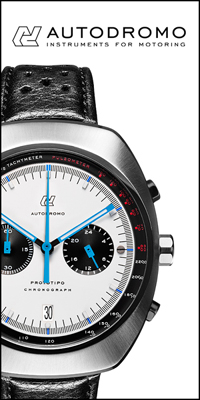


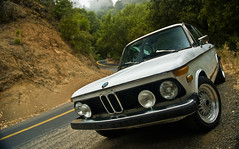
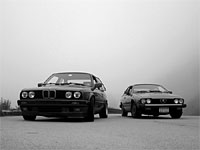
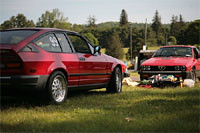






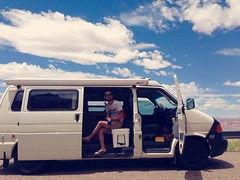
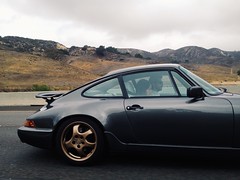
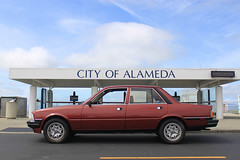
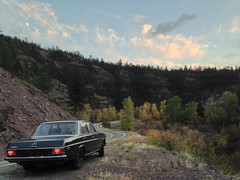

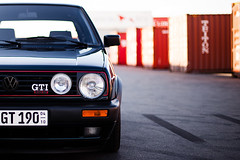

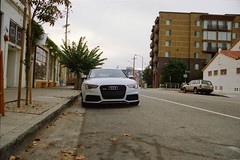
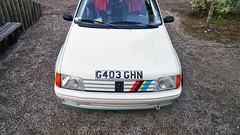
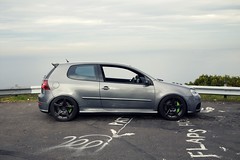

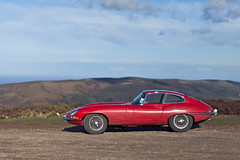
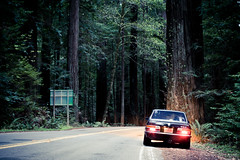
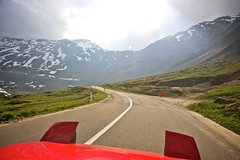

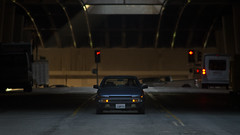




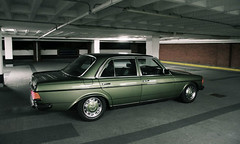
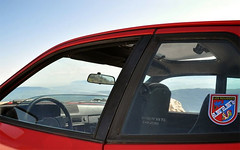
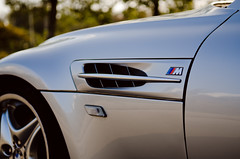
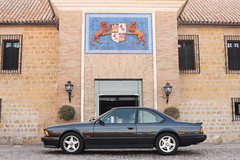


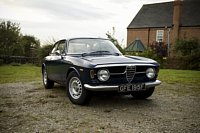
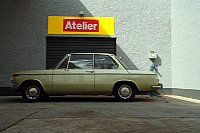


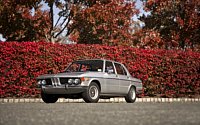

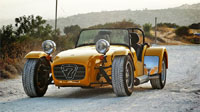



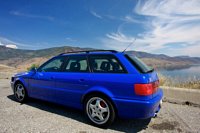
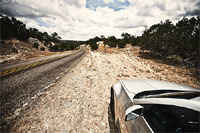
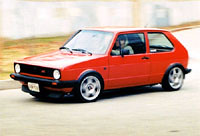
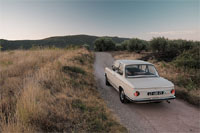

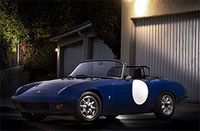



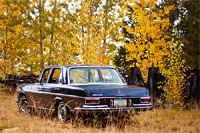
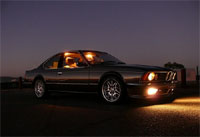
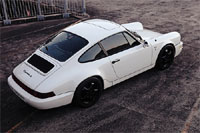
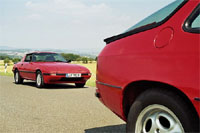

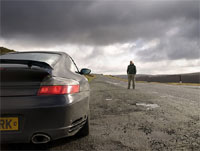
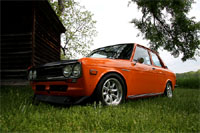

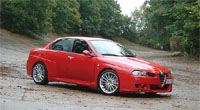



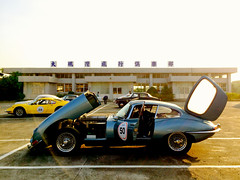
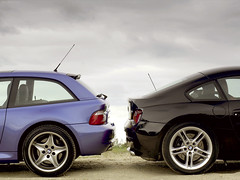
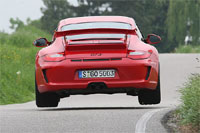
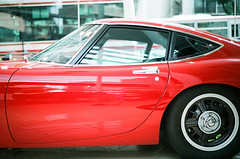

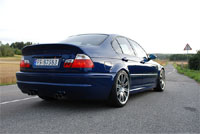
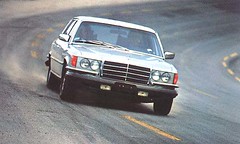
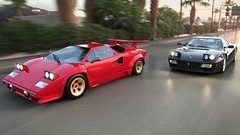
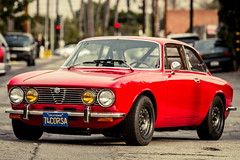


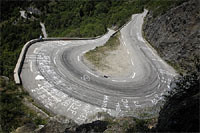
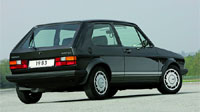

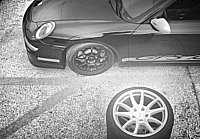



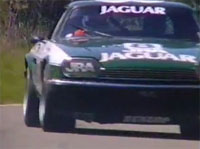
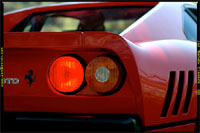

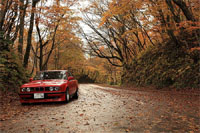
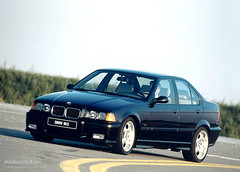


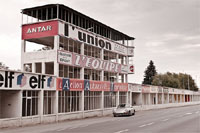




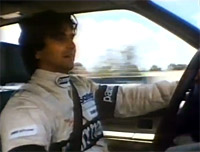
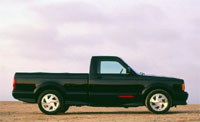


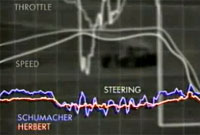
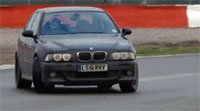
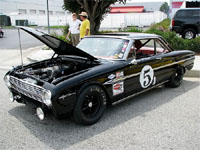




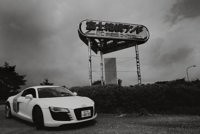
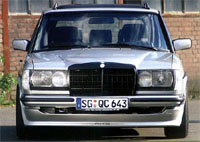



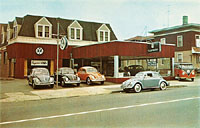


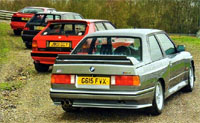


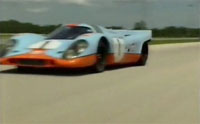

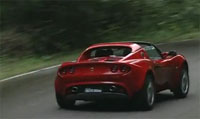
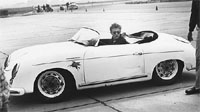

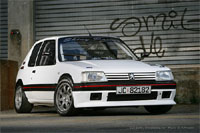
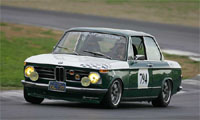

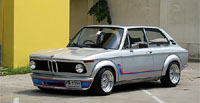

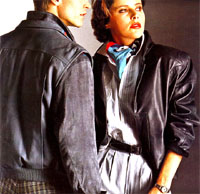
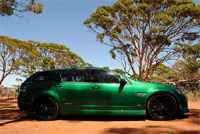


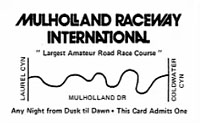
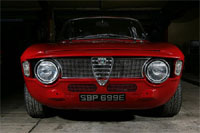
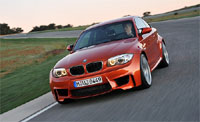
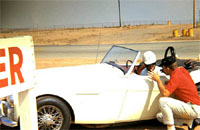
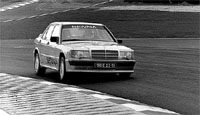
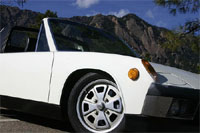
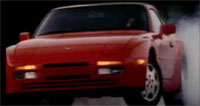
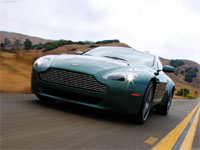
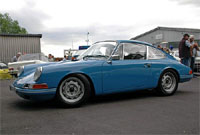

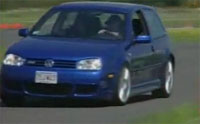
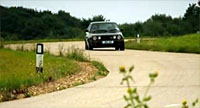




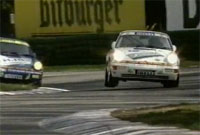
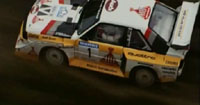
What a nice piece, guys. Thanks
I rather liked the original steering wheel seen in the first images though.
And as much as a fun as I am for the set of Watanabes he has (Igot a set on my AE86), either he needs smaller tires (both width and sidewall) or a smaller size of rim diameter to make it look “correct” to the car’s size.
Greetings from 8000vueltas.com!
Jorge Azcoitia said this on February 15, 2013 at 1:08 am
You are of course quite correct on both counts.
The OEM handle is much nicer, but unfortunately is nearly unworkable with long legs. The smaller period Chris Amon Motolita-style allows easy in and out, and does not rub my legs when driving.
The car is wearing 175/70R13 now (on 5.5in Wats), and I wanted 165s but any reasonable tire in that format is very hard to find. You should have seen it with the 185s it came with – it looked like a Dakar prepped Range Rover…
Skorj said this on February 15, 2013 at 4:32 am
Beautiful car and images!
Kevin McCauley (@kmccauley) said this on February 15, 2013 at 10:17 am
it brings a tear to my eye when i see a reminder of the innovative, fun cars honda started out with. now they have been reduced to making boring anonymous cars for the cardigan wearing brigade.
😦
wm said this on February 15, 2013 at 5:51 pm
As the r35 owner in the pictures id just like to mention that the s800 does indeed sound fantastic.
Jamie said this on February 16, 2013 at 5:44 am
And I have always wanted one of these little beauties! Too great to find this post. Thank you!
Gabriele Spangenberg said this on February 17, 2013 at 2:50 pm
A beauty of a car and some great photography – well done!
Jared said this on February 18, 2013 at 8:36 am
well done…
alfredo said this on February 18, 2013 at 3:09 pm
Fantastic. The sound of that engine is addictive too…
Walter R. Moore said this on June 9, 2013 at 10:22 pm
(What Walter is referring to:
http://www.flickr.com/photos/tokyo_scooter_stuff/8993524579/?likes_hd=1)
motoringconbrio said this on June 9, 2013 at 10:24 pm
So impressive, made my weekend. Thank you!
trustattila said this on July 19, 2013 at 12:13 pm
thanks again for your s800 story…
alfredo said this on July 20, 2013 at 1:02 pm
Beautiful evocative photos, love the shot with the Shinkansen overhead, and love the heads up re the favourite drives. Will definetly seek then out on my next visit
David prince said this on July 21, 2013 at 1:44 am
[…] car. Explained I liked twin-cammed kyusha, and he asked me what I drove. When I told him a Honda Hachi he opened the car, hood, and proceeded to show me the good bits. A crowd gathered… I love […]
Japan carspotting: sake-getter edition | . . . said this on September 13, 2013 at 12:01 am
Another well developed contribution to MCB. From my 50 mile view, vintage Japanese cars are frequently overlooked or overshadowed by the more pedigreed European models. This is a nice example that demonstrates one of the early Japanese successes. The car is a fun, affordable, and technologically rich vehicle. You can see the passion and seriousness for motoring that Honda espoused here. I also really enjoy seeing a good car survive a few decades and become a driver (not someone’s museum piece) like this.
As an aside, you can see a similar model driven around and articulately celebrated on one of Jay Lenos garage videos, which i mention not to advertise for Jay but simply for the rest of MCB readers to visit simply to see the car driven and to hear its glorious motor.
J. Britton Larkby said this on December 5, 2013 at 11:41 am
Thank you for the nice comment, J.B. In fact, there is a hyperlink to that Leno video (which I, too, enjoyed) in the first paragraph of this article 🙂
motoringconbrio said this on December 5, 2013 at 11:46 am